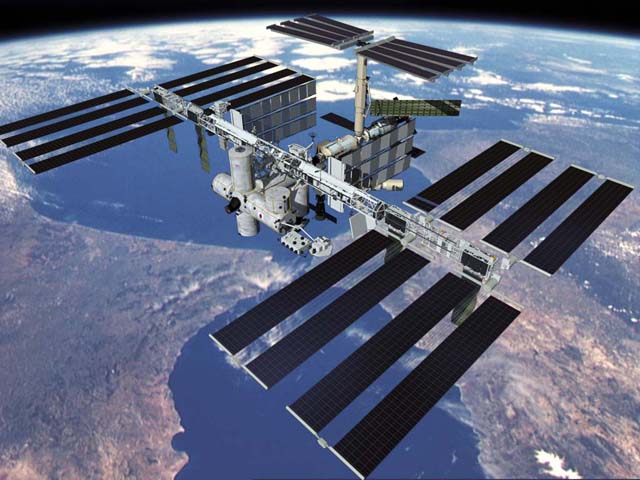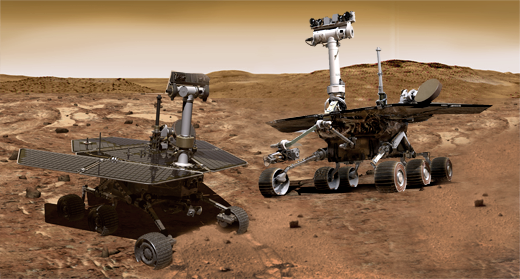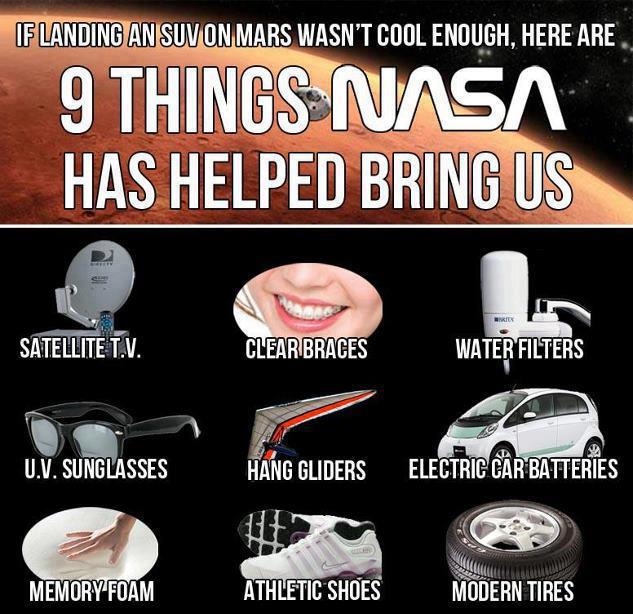Can people survive in a place with a harsher environment than Antarctica?
 MarsIt’s a place with no breathable air, no food, freezing cold, and is bombarded by solar radiation. Yet NASA wants to send people there to live. Why would anyone want to take such a risk in an environment more hostile than anything on earth? Perhaps it was because of its monumental announced back in September that it had found strong evidence of liquid water flowing on the surface of Mars. A month later, it was a discovery that brought the search for life in outer space to the little red planet right next door.
MarsIt’s a place with no breathable air, no food, freezing cold, and is bombarded by solar radiation. Yet NASA wants to send people there to live. Why would anyone want to take such a risk in an environment more hostile than anything on earth? Perhaps it was because of its monumental announced back in September that it had found strong evidence of liquid water flowing on the surface of Mars. A month later, it was a discovery that brought the search for life in outer space to the little red planet right next door.
NASA has been ambitious about its plan to get people to live on the red planet, perhaps as soon as 2030. The mars rovers opportunity and spirit have been roaming the Mars landscape since 2003 (and joined by curiosity in 2012). NASA has been testing the effects of living in space for years by sending people to the International Space Station for long periods of time. Astronaut Scott Kelly began a year-long mission on the ISS in March 2015. In August, 2015, the agency began an experiment to mimic life on Mars by sending six people to live in a dome for a year near an inactive volcano in Hawaii.
While extensive research is being done to study Mars’ climate and to test conditions to mimic living there, what would it be like to live in a place that lacks most necessities to sustain life on Earth? First off, it would be much colder than here. The average temperature on Mars is a brisk -58⁰F (-50⁰C), cold enough to make almost anyone shiver, but that doesn’t tell the whole story. While the atmosphere of mars consists mostly of the greenhouse gas carbon dioxide, it is about 100 times thinner than that of earth, which prevents it from retaining heat. This causes some extreme temperature fluctuations. A typical summers day near the equator can see temperatures reaching 70⁰F (20⁰C) and then drop to 100⁰F (-73⁰C). The poles can experience temperatures of -195⁰F (-126⁰C) in winter, cold enough for it to snow dry ice.
95 per cent of Mars atmosphere is composed of carbon dioxide, which means it would be impossible to breathe. Since the air is so thin, there is virtually no air pressure, making it feel like a vacuum. Without a space suit, oxygen in the blood would be replaced with carbon dioxide, poisoning the body. Before that happens however, the lack of air pressure would instantly vaporize moisture in the body and rupture organs.
 International Space StationIf you are not a fan of rain, the red planet might be for you, because it never rains. This leaves the surface completely dry and arid that is covered by sand, rocks, and dust. If you are a snowbird, you are in luck because Mars does receive snow. It isn’t a water based snow that we all know and love, it is carbon dioxide based. Since temperatures are so cold, it snows dry ice.
International Space StationIf you are not a fan of rain, the red planet might be for you, because it never rains. This leaves the surface completely dry and arid that is covered by sand, rocks, and dust. If you are a snowbird, you are in luck because Mars does receive snow. It isn’t a water based snow that we all know and love, it is carbon dioxide based. Since temperatures are so cold, it snows dry ice.
Like Earth, Mars can experience winds and can reach speeds up to 60 mph. Since the atmosphere is much thinner, they do not have nearly the same force as they do on Earth. Michael Smith of NASA’s Goddard Space Flight Center says these winds would feel like a 6mph breeze. The winds create massive dust storms that cover an area that is the size of some continents. Once every three years or so, these storms can be so large that the entire continent is surrounded by dust reaching heights of 19 miles (30 Km).
 The mars rovers opportunity and spirit have been roaming the Mars landscape since 2003 (and joined by curiosity in 2012). While NASA and others are doing extensive research to mimic some of Mars conditions, can they truly prepare? Unlike the ISS or even the moon, Mars is 33.9 million miles (54.6 million Km) away at its closest point. A journey there takes 150 – 300 days with current technology. That means a team living on Mars would need at least six months of oxygen, food, water, and supplies to survive until a supply ship arrives to replenish goods. There would still need to be living spaces, work spaces, and ways to get energy. Based on current technology, an MIT study estimates that oxygen and supplies would run out in about 68 days. Then there are the psychological effects of living in isolation from humans (it takes about 15 minutes for any communication transmissions to travel between the planets) and physical effects of living in a low gravity environment.
The mars rovers opportunity and spirit have been roaming the Mars landscape since 2003 (and joined by curiosity in 2012). While NASA and others are doing extensive research to mimic some of Mars conditions, can they truly prepare? Unlike the ISS or even the moon, Mars is 33.9 million miles (54.6 million Km) away at its closest point. A journey there takes 150 – 300 days with current technology. That means a team living on Mars would need at least six months of oxygen, food, water, and supplies to survive until a supply ship arrives to replenish goods. There would still need to be living spaces, work spaces, and ways to get energy. Based on current technology, an MIT study estimates that oxygen and supplies would run out in about 68 days. Then there are the psychological effects of living in isolation from humans (it takes about 15 minutes for any communication transmissions to travel between the planets) and physical effects of living in a low gravity environment.
 Some inventions by NASAWith current studies of the Mars landscape constantly bringing up interesting surprises, who knows what will come by sending people there. Will we be surprised? Or will we get insight as to our own planets fate. It certainly seems like an impossible task and overly ambitious to have people walking on the surface of Mars by 2030. We may never be able to sustain any life on Mars in any reasonable matter. That is not to say that the space agencies shouldn’t explore the option. As the famous saying goes, it’s about the journey, not the destination. LED, artificial limbs, and memory foam are just a few of the 1800 technologies that people use every day that were discovered within the walls of NASA. Medicine, computing, transportation, energy, the military, and many other fields have been impacted by space exploration. As scientists seek to overcome the many challenges of travelling to and sustaining life on Mars, many other discoveries will surly come about. People have been fascinated with the idea of life on Mars since its discovery. What will become of this fantasy as many try to make it a reality?
Some inventions by NASAWith current studies of the Mars landscape constantly bringing up interesting surprises, who knows what will come by sending people there. Will we be surprised? Or will we get insight as to our own planets fate. It certainly seems like an impossible task and overly ambitious to have people walking on the surface of Mars by 2030. We may never be able to sustain any life on Mars in any reasonable matter. That is not to say that the space agencies shouldn’t explore the option. As the famous saying goes, it’s about the journey, not the destination. LED, artificial limbs, and memory foam are just a few of the 1800 technologies that people use every day that were discovered within the walls of NASA. Medicine, computing, transportation, energy, the military, and many other fields have been impacted by space exploration. As scientists seek to overcome the many challenges of travelling to and sustaining life on Mars, many other discoveries will surly come about. People have been fascinated with the idea of life on Mars since its discovery. What will become of this fantasy as many try to make it a reality?
 Daniel J. SteigerBy Daniel J. Steiger
Daniel J. SteigerBy Daniel J. Steiger











